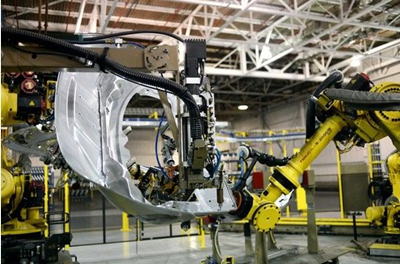Although some drivers are skeptical, it is true that more and more More and more cars are held together with adhesives. Not only that, but adhesives are used in airplanes, cell phones, and many, many other items.
Adhesives have been replacing welds, rivets, screws, and bolts in conventional cars for decades, so slowly that little attention has been paid to it. Now, as manufacturers are pursuing lightweight vehicles to meet fuel economy requirements, the development of automotive adhesives has begun to accelerate.
This is undoubtedly good news for adhesive manufacturers such as Henkel, HB.fuller, Dow Chemical, 3M, etc., although they still face some technical obstacles, such as how to Improve the high temperature resistance of the adhesive. At the same time, they have to convince design engineers who prefer traditional metal fasteners to accept adhesives.
Eric Linak, senior consultant at IHS, estimates the global market for structural adhesives used in cars, aircraft and other vehicles has reached $2 billion this year, up from $1.5 billion a decade ago. He said that a few years ago the market was only growing at a rate of 2% to 3%, but now it is growing at a rate of 4% to 5% per year.
“Using adhesives to bond car bodies is a new welding technology.” Dow workshop supervisor Steve Henderson said. He used to work as a welder for General Motors.
Basic metallurgy helped them a lot, because aluminum doesn’t weld easily to steel, but it does with adhesives, so chemical methods were used. Carbon fibers and other composite materials are inherently more adhesive than screws.
The body of the 2015 Ford F150 is made of aluminum, and the amount of adhesive used is three times that of the prior model of the best-selling car in the United States. The compartments of BMW’s new project electric and hybrid vehicles are made of adhesives combined with carbon fiber, replacing traditional metal fasteners. General Motors’ Corvette (Corvette) sports car also uses adhesives to bond the carbon fiber roof panel to the body of the magnesium frame.

Daniel Murad, chief executive of ChemQuest Group, a Cincinnati consulting firm, said that ten years ago, cars used 18 pounds of glue per vehicle, and now it is about 27 pounds.
“It is not necessary to use adhesive everywhere in the whole car.” John Hill, a Ford researcher, said. But he expects the amount of glue used in cars to rise. To make aluminum more compatible with the car, Ford persuaded Alcoa and other aluminum suppliers to share its pretreatment technology in exchange for royalties.
And in aviation, the Boeing 787 illustrates the growing importance of adhesives. About half of the structure of the Dreamliner’s fuselage is replaced by lighter and stronger carbon fiber composite materials. The fuselage is made of packaging materials impregnated with epoxy resin and dried to cure. Each of the five parts of the plane’s frame uses 40,000 to 50,000 fewer metal fasteners than a conventional plane, Boeing said. In Wichita, Kansas, where the front fuselage of the Dreamliner is built, the entire facility is as quiet as a library, with so little metal bumping against each other.
The history of adhesives used in automobiles and aircraft goes back more than half a century. Adhesives have been used in the automotive industry to hold windshields in place since the 1960s. In the late 1980s, GM introduced minivans with plastic body panels glued to a steel frame.
Today’s Cadillac CTS and ATS sedans use more than five times as much glue as GM’s standard. One of the reasons is to make the body stiffer and eliminate instability problems. “I think structural adhesives will extend to more vehicles,” said David Malik, GM’s director of advanced automotive research and development.
With the requirement of light weight of automobile, the thickness of the steel plate used in the body is getting thinner and thinner, but some parts require higher strength. The adhesive can be used as a reinforcing material to play a local reinforcing role. For example, sticking reinforcements to the steel plates that people lean on when filling up the gas could make cars less fragile. The use of adhesive reduces the number of rivets and welding points, which not only reduces the vibration of the steel plate, eliminates noise, but also makes the car look more beautiful.
At a Ford factory in Wayne, a yellow FANUC robot rotates the rear hatch of a Lincoln MKC sport utility vehicle, and an automatic gluer sprays toothpaste-like epoxy on its surface, four synchronized The robot clamps the inside and outside of the hatch.

Other robots spray adhesive on rivets and hold the two parts until the body can be baked to cure the epoxy. It’s so strong, with half an inch of metal overlap glued together, it can withstand 6,500 pounds per square inch of pressure before the body shatters.
But will adhesives be as secure as traditional welds, rivets, and screws? A spokesman for the insurance agency for highway safety says they haven’t considered the issue. The National Highway Traffic Safety Administration says cars must meet federal safety standardsWhat kind of manufacturing technology does the manufacturer use.
Some adhesives contain organic solvents or other hazardous substances, Chemquest’s Murad said. “All of these ingredients are present in tiny amounts per usage, but moderately skilled workers need to be trained to use and handle the adhesive,” he said.
Since adhesives do not resist high temperatures well, the engine components are assembled with screws and other fasteners. Adhesive manufacturers are trying to find ways to make their products resistant to high temperatures. “We’re getting closer and closer to the engine,” says Florian Schattenmann, vice president of research at Dow.
Another major challenge is that automotive parts can become oily or dirty, which can greatly affect the effectiveness of the adhesive. Also, sometimes when making adjustments or repairs to a car, the manufacturer wants the car to be easy to take apart; strong adhesives can complicate disassembly.
Murad believes that the biggest obstacle for adhesive manufacturers to expand is psychological warfare. Many engineers are not trained in adhesives, so they are more inclined to the original nuts and bolts. After all, it’s easy to check that a screw is tight, but harder to tell if the glue was applied correctly.
It seems that in order for engineers to no longer hesitate and reject, it is necessary to optimize the experience of using adhesives.



 微信扫一扫打赏
微信扫一扫打赏
